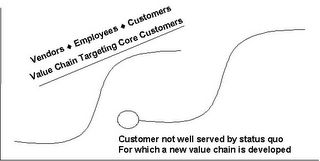By John Warner
Originally published by Greenville NewsRecently Gov. Mark Sanford observed that research universities in the state should be focused more on education than economic development. As the father of two teenagers preparing for college, it is easy for me to agree with one of those common-sense observations we have grown to appreciate Gov. Sanford for making.
Do close partnerships between a research university and industry diminish the educational mission of the university or do they enhance it? And can closer alignment result in a more efficient use of the resources in our community, which is another major priority of the governor?
Clemson University was created in 1883 by the will of Thomas Green Clemson, when our community was devastated and impoverished by the War Between the States. The primary industry at the time was agriculture. Mr. Clemson understood that education and economic development are inherently tied together, with the road to higher per capita income in his time being the increased productivity of agriculture. So the university's economic development mission was ensconced in its founding charter.
Clemson's will states that, "My purpose is to establish ... a high seminary of learning in which the graduate (can finish the course of studies) ... in those sciences and arts which bear directly upon agriculture. I trust that I do not exaggerate the importance of such an institution for developing the material resources of the State by affording to its youth the advantages of scientific culture."
Fast forward to today. Are there proven models where the research university is an engine of the economy? In 2001, I visited George Kozmetsky, architect of the Austin economic development model.
In the late 1970s, Austin was devastated by the decline of its oil-based economy. Dr. Kozmetsky sought areas where industry in his region, like Texas Instruments and IBM, needed world-class talent. There, the University of Texas created endowed chairs to recruit pre-eminent scholars, who attracted top students, who graduated and went to work for industry in the region.
The beauty of this model is that neither the university nor industry is focused outside its core mission -- the university stays focused on research and education, and industry on the commercialization of intellectual property. Fusing academic/industry partnerships together around the common need for best-in-the-world talent has helped Austin become one of the country's most successful knowledge-based economies.
At the core of the Clemson International Center for Automotive Research is the Campbell Graduate Engineering Center, where pre-eminent scholars will attract the brightest students in areas strategic to BMW, Michelin and other automotive suppliers. Within a few hundred feet is the BMW IT Research Center, focused on systems integration in automobiles, which is key to maintaining BMW's global competitiveness. BMW did not have to be convinced to do research, they only had to be convinced to do research here, and top graduate education at Clemson was the magnet to do that. So when Clemson's top automotive engineers graduate, some will go to work for BMW without even having to find a new parking space.
This model is replicable. In the S.C. Health Sciences Collaborative, the University of South Carolina and the Medical University of South Carolina will attract and train top students in areas strategic to their industry partners, Greenville Hospital and Palmetto Health.
Several years ago, I described this strategy to a state representative who questioned, "Yea but, how does this impact ordinary people?" Well, the Michelin America's Research and Development Corporation (MARC) is a 1,000 person corporate R&D facility at the Donaldson Center. Forty percent of MARC employees have a bachelor's degree or better, which means that over half of the people at the MARC have a technical college education.
So a major corporate R&D facility does create large numbers of technically skilled jobs. On top of that, the MARC helps keep the Michelin production facilities in the area more globally competitive, where the percentage of technically skilled employees can be up to 90 percent of the workforce.
While graduate engineering schools and corporate R&D facilities need doctorate-level scientists at the top to lead them, and while they increase the community's per capita income by creating large numbers of bachelor level or better jobs, they also create large numbers of technically skilled jobs and help retain the ones that are here. Thomas Clemson understood this in 1883, George Kozmetski demonstrated it in Austin by 1983, and we can see it at work in Greenville today.
The governor is right that staying focused is a key to success for any organization, whether in academia or industry, and that we have limited resources which we must use more productively. The industry/academic partnerships being created in our community allow each partner to remain focused on its core mission in a way that increases our community's ability to attract and retain some of the smartest people on the planet and enhances the overall productivity of our economy. These partnerships will help move us toward our goal of having one of the most successful economies in the country.
